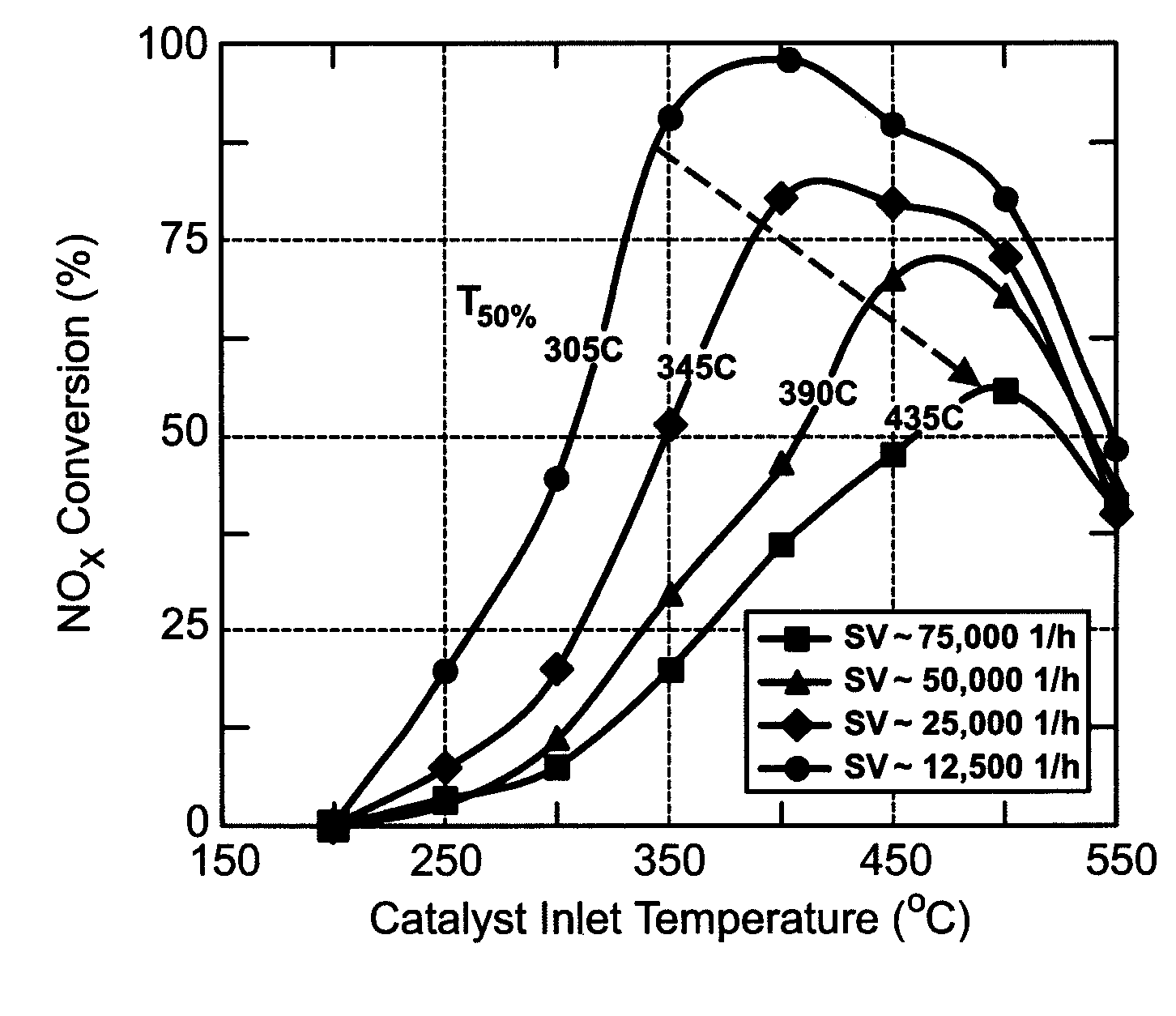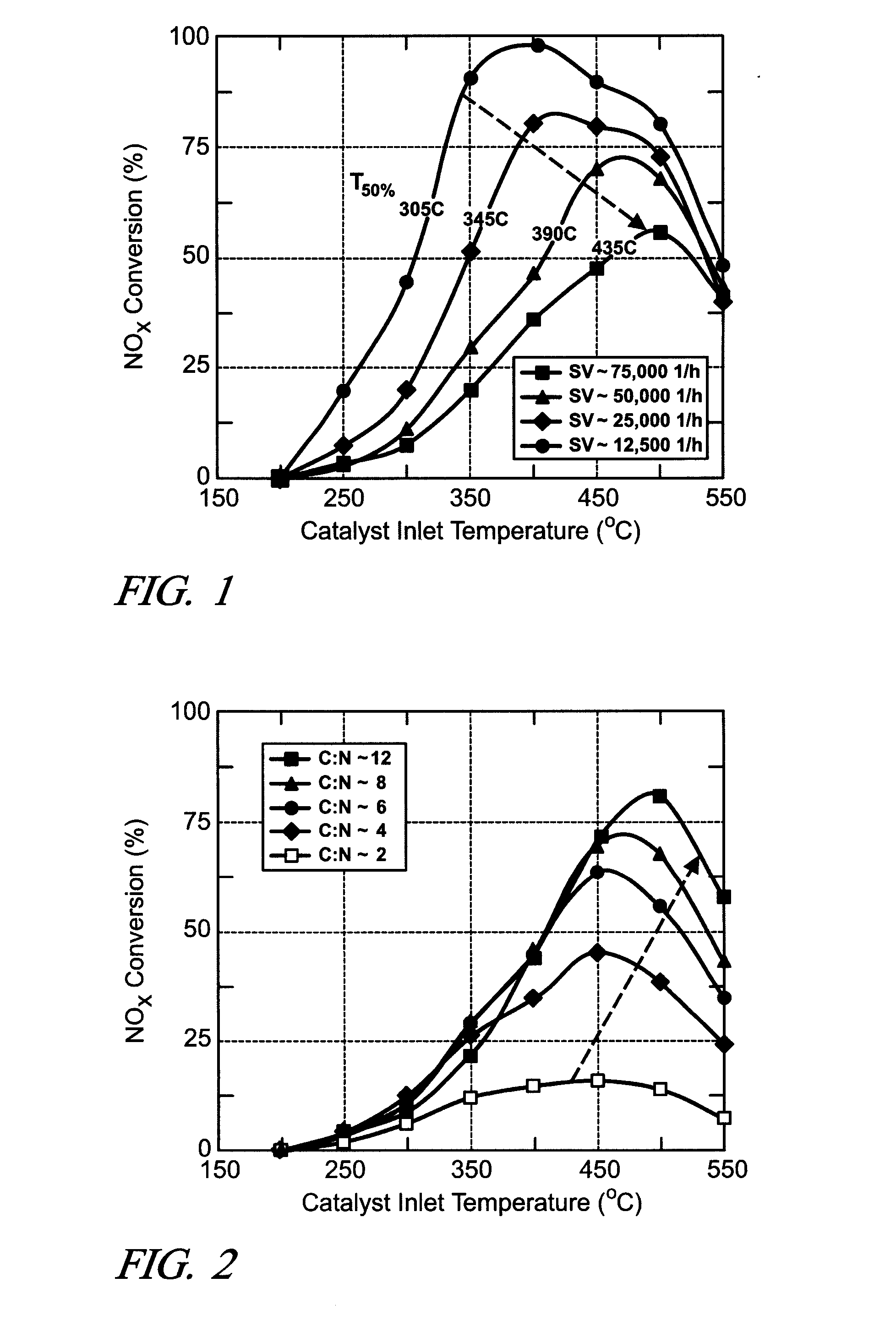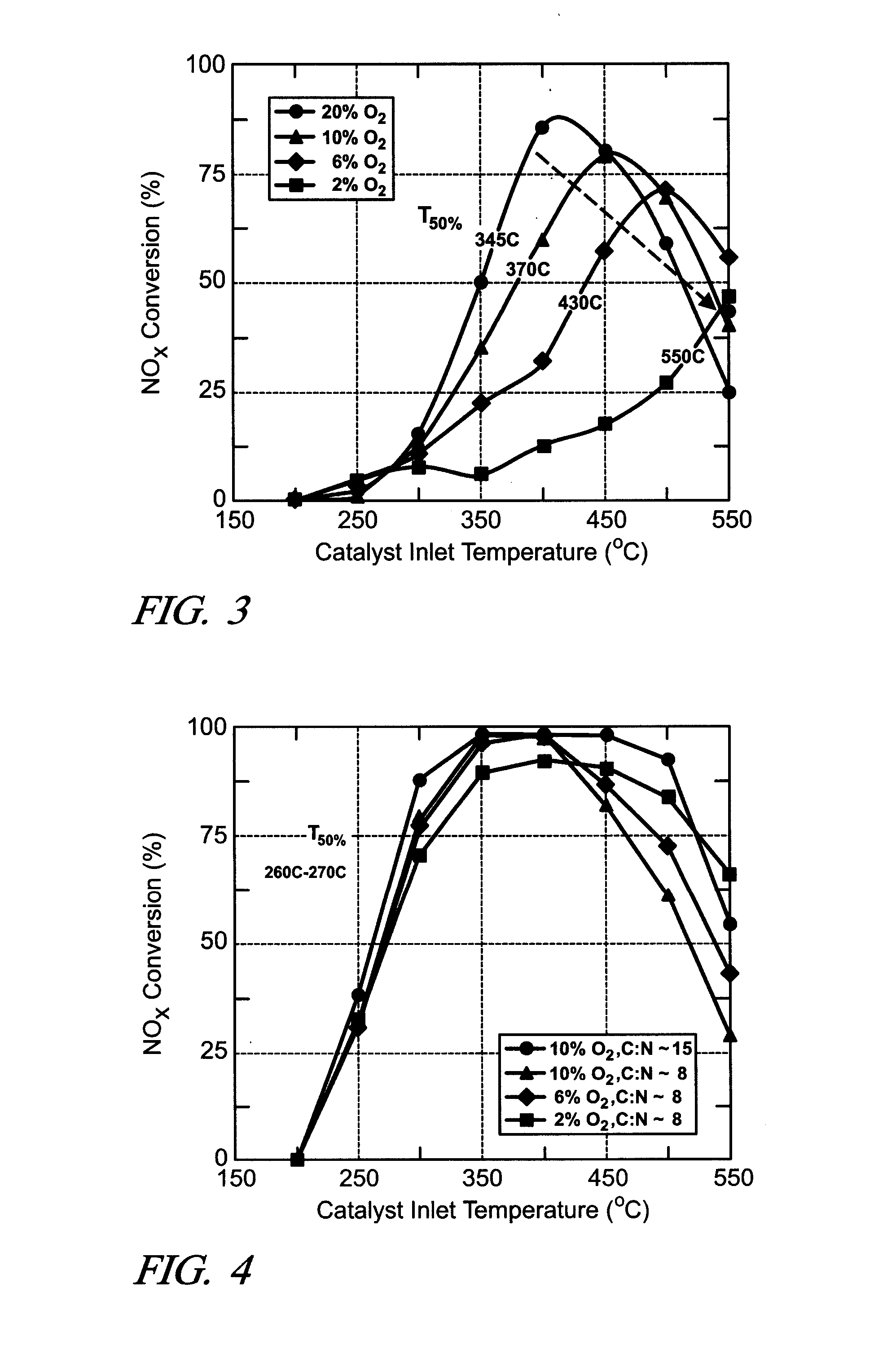Method and Apparatus to Selectively Reduce NOx in an Exhaust Gas Feedstream
a technology of exhaust gas feedstream and selective reduction, which is applied in the direction of mechanical equipment, machines/engines, separation processes, etc., can solve the problems of reducing the nox of the engine, the commercial application of lean-operating engines is limited, and the nox of the engine is typically not sufficiently active, etc., to achieve the effect of selectively reducing the nox of the internal combustion engin
- Summary
- Abstract
- Description
- Claims
- Application Information
AI Technical Summary
Benefits of technology
Problems solved by technology
Method used
Image
Examples
Embodiment Construction
[0015]Referring now to the drawings, wherein the showings are for the purpose of illustrating the invention only and not for the purpose of limiting the same, a method, preferably executed as a control algorithm in an on-vehicle control module, is provided to selectively reduce NOx concentration in an exhaust gas feedstream of an internal combustion engine during lean operation. The method comprises determining a parametric measure of NOx gases in the exhaust gas feedstream, and determining a preferred hydrocarbon / NOx ratio based upon parameters of the exhaust gas feedstream. A hydrocarbon-based reductant, e.g., fuel, is selectively dispensed into the exhaust gas feedstream upstream of a silver-alumina catalytic reactor device, to effect NOx reduction therein while limiting slip of hydrocarbons therethrough. The preferred hydrocarbon / NOx ratio comprises a HC1 / NOx ratio optimized to effect reduction of a NOx concentration of the exhaust gas feedstream in the silver-alumina catalytic ...
PUM
 Login to View More
Login to View More Abstract
Description
Claims
Application Information
 Login to View More
Login to View More - R&D
- Intellectual Property
- Life Sciences
- Materials
- Tech Scout
- Unparalleled Data Quality
- Higher Quality Content
- 60% Fewer Hallucinations
Browse by: Latest US Patents, China's latest patents, Technical Efficacy Thesaurus, Application Domain, Technology Topic, Popular Technical Reports.
© 2025 PatSnap. All rights reserved.Legal|Privacy policy|Modern Slavery Act Transparency Statement|Sitemap|About US| Contact US: help@patsnap.com



